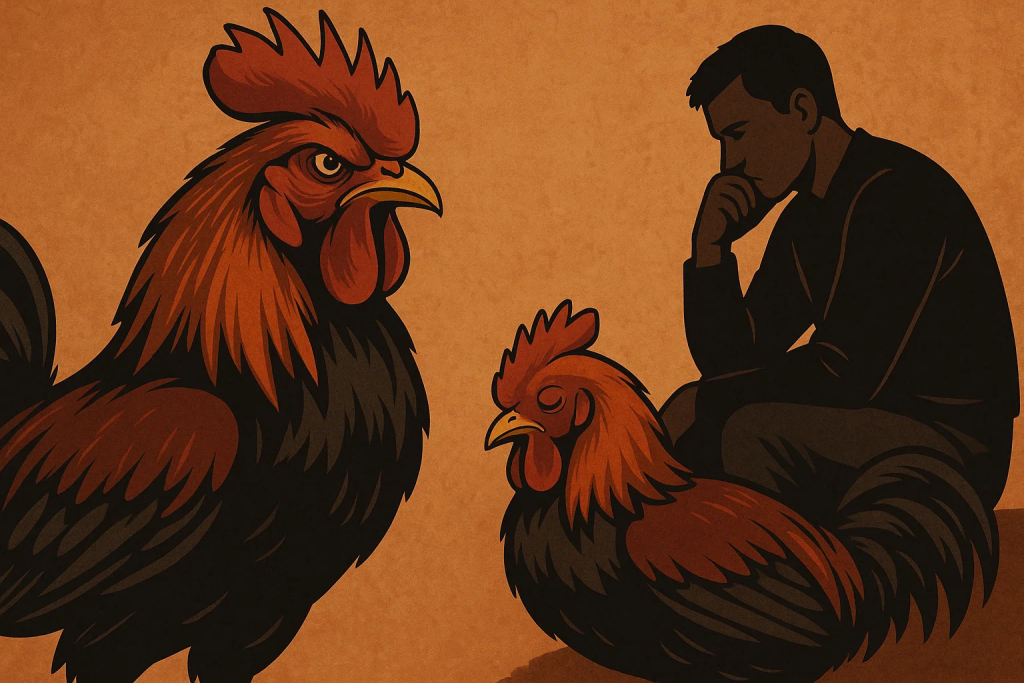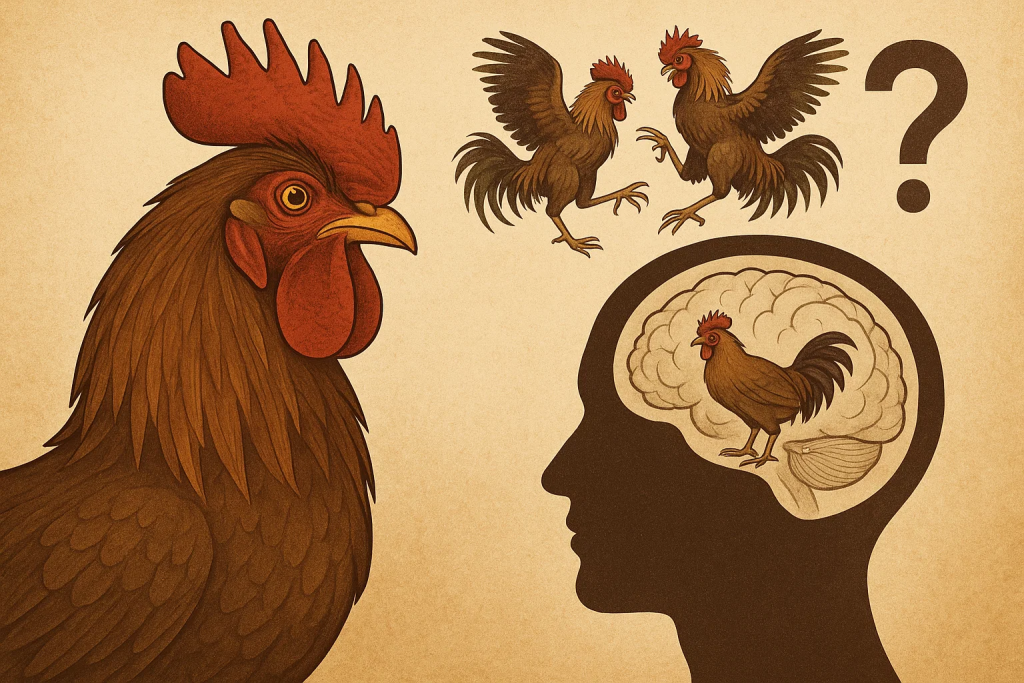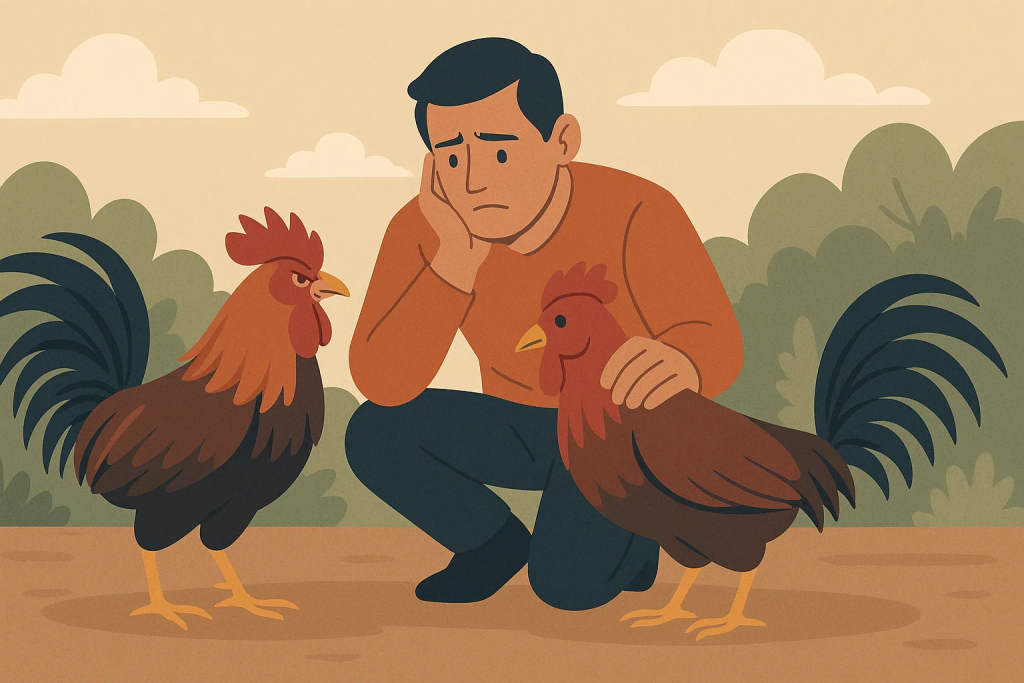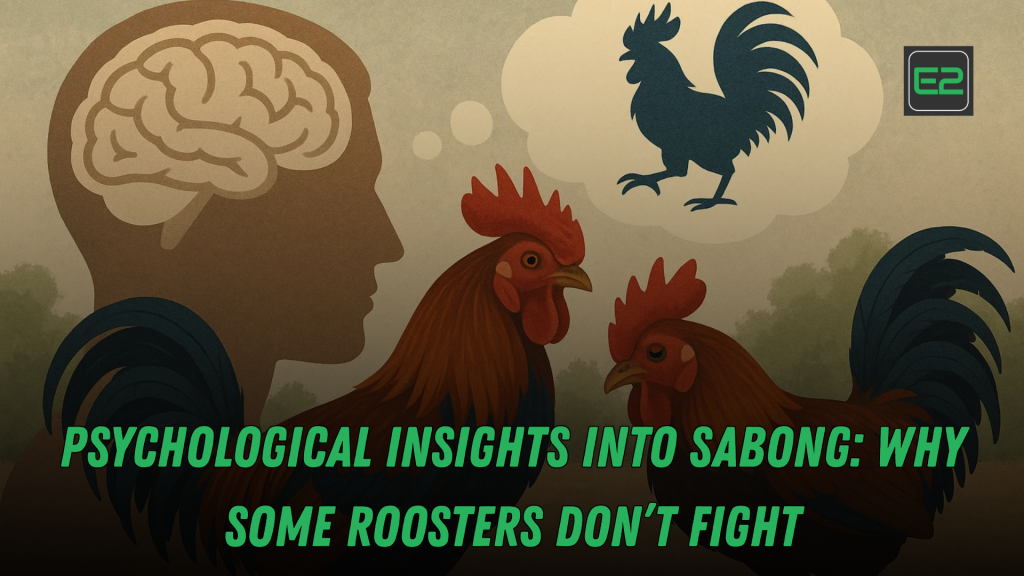Sabong, or cockfighting, has been a popular and traditional sport in the Philippines for centuries. While it is largely viewed as a form of entertainment and a cultural practice, it is also a sport that requires a deep understanding of the birds involved. Many sabungeros (cockfighting enthusiasts) will attest to the fact that not all roosters are born to fight, and sometimes even the most promising bird might refuse to engage in a fight. In this article, we will explore the psychological reasons why some roosters don’t fight and how understanding their behavior can improve the overall experience of cockfighting.
Table of Contents
1. Understanding Sabong and the Role of Roosters
What is Sabong?
Sabong is a sport that involves two roosters fighting in a pit, often with sharp blades attached to their legs, in front of a crowd of spectators. The primary goal of the fight is to determine which rooster is stronger, faster, and more aggressive. Historically, cockfighting has been embedded in Filipino culture, often seen as a social and even spiritual activity.
However, despite the competitive nature of sabong, not all roosters are eager to fight, and understanding why this happens is essential for those involved in the sport.
The Psychology of Roosters
Just like humans, animals, including roosters, have their own unique personalities and psychological traits. Some roosters are naturally more aggressive, while others are more timid or passive. The psychological makeup of a rooster plays a significant role in determining its willingness to engage in a fight.
Terms Every Sabungero Must Know and the Amazing Language of the Cockpit

2. Why Some Roosters Don’t Fight: Psychological Insights of Sabong
1. Fear and Anxiety
Roosters, much like other animals, experience fear and anxiety. These emotions can be triggered by the unfamiliar environment, the presence of other aggressive roosters, or the overwhelming atmosphere during a fight. A rooster that is afraid may not engage, or it might attempt to flee the fight, rather than confront its opponent. Fear can be amplified in young birds who haven’t yet experienced the pressure of a fight, or in birds that have undergone stressful training conditions.
Factors Contributing to Fear in Roosters:
- Unfamiliar Environments: Roosters might become anxious when placed in new settings, especially if they have not been socialized with other birds.
- Lack of Socialization: Birds that are not accustomed to the presence of other roosters may feel threatened and reluctant to fight.
- Previous Traumas: Roosters that have been injured or have experienced failure in earlier matches may develop a fear of engaging in future fights.
2. Genetic Factors and Breeding
Another significant factor influencing a rooster’s willingness to fight is its genetics. Breeding plays a crucial role in determining the behavioral traits of roosters. Over time, certain breeds of roosters have been selectively bred for their fighting abilities, while others have been bred for traits like size, strength, or appearance.
Genetic Predisposition to Fight:
- Fighting Bloodlines: Some breeds have been specifically bred for aggressive behavior, making them more likely to engage in a fight. On the other hand, birds from non-fighting bloodlines may not possess the same natural inclination to fight.
- Individual Variations: Even within fighting breeds, there can be significant variation in the temperament of individual roosters. Some may naturally avoid conflict, while others might eagerly engage.

3. Training and Early Socialization
Roosters that are trained to fight are often put through a variety of conditioning practices. However, the quality and intensity of the training can significantly influence whether a rooster is willing to engage. A rooster that has been poorly socialized or improperly trained might lack the necessary confidence to fight effectively.
The Role of Training in Developing Fighting Skills:
- Early Exposure: Roosters that are exposed to fighting from a young age are typically more confident and more likely to engage in the fight. Those that are kept in isolation or subjected to harsh training conditions may develop psychological barriers that prevent them from fighting.
- Positive Reinforcement: Roosters that receive positive reinforcement during training (such as rewards for aggressive behavior) tend to be more willing to fight. Negative experiences, on the other hand, can instill fear or reluctance.
4. Stress and Overstimulation
The environment in which a rooster is kept plays a crucial role in its psychological state. Overstimulation due to loud noises, constant interaction with other aggressive birds, or a high-stress environment can lead to heightened anxiety and stress levels. These factors can cause the rooster to refuse to fight, either by retreating into a submissive state or simply refusing to engage altogether.
Signs of Stress in Roosters:
- Erratic Behavior: Roosters that are stressed might display signs of nervousness, such as pacing or vocalizing excessively.
- Aggressive Outbursts: Overstimulation can sometimes cause a rooster to become unpredictably aggressive or, conversely, overly passive.
5. Dominance and Hierarchy
In the natural world, roosters, like many animals, establish a social hierarchy. Some roosters are more dominant and assertive, while others adopt a more passive role. Roosters that have a lower status in the pecking order may hesitate to fight, especially if they sense that their opponent is more dominant or aggressive.
Behavioral Traits of Dominant vs. Submissive Roosters:
- Dominant Roosters: These roosters are more likely to initiate fights and take charge of the situation, especially when they feel confident.
- Submissive Roosters: Submissive roosters may show reluctance to fight, either avoiding confrontations or displaying less aggressive behavior during the fight.
3. How Sabungeros Can Address Rooster Refusal to Fight
Understanding the psychological reasons behind a rooster’s refusal to fight is crucial for sabungeros looking to train and prepare their birds. Here are some tips to address reluctance in roosters:
- Proper Socialization: Ensure that roosters are gradually exposed to other birds from an early age, helping them become more comfortable in a competitive environment.
- Stress Management: Create a calm and balanced training environment to avoid overstimulation or excessive stress. Use positive reinforcement to encourage confident behavior.
- Tailored Training: Every rooster has its own personality. Tailor your training approach based on the individual needs of each bird, focusing on building confidence and reducing anxiety.

4. The Role of Psychology in Sabong
The psychological conditioning of roosters is a complex yet critical aspect of sabong that determines their success in the arena. While some roosters are naturally predisposed to fight, others may need additional training and socialization to overcome their fears and reluctance. Understanding the psychological factors that influence a rooster’s behavior can help sabungeros better prepare their birds for the challenges of the fight and ultimately lead to more successful outcomes.
In the world of sabong (cockfighting), not all roosters are eager to fight. Various psychological factors influence a rooster’s willingness to engage, including fear, anxiety, genetics, and stress. Roosters that experience fear or anxiety may avoid confrontation, while those with poor socialization or improper training might also refuse to fight. Additionally, some roosters have a genetic predisposition to be less aggressive, especially if they come from non-fighting bloodlines.
Proper socialization and training can help roosters overcome these issues, with techniques like visualization, positive reinforcement, and stress management helping to boost their confidence. Roosters from dominant bloodlines are naturally more inclined to fight, while others may need a tailored training approach to develop the right mindset.
Understanding the psychological factors behind a rooster’s behavior is key to successful sabong. By addressing these elements, sabungeros can better prepare their roosters for the challenges of the ring, improving performance and outcomes in the arena.
What are your thoughts?
For those passionate about sabong, it’s essential to take a holistic approach to training. Focus not only on the physical training of your roosters but also on their psychological well-being. By understanding and addressing the psychological factors that influence a rooster’s behavior, you can enhance their fighting abilities and create a more rewarding sabong experience.
Frequently Asked Questions (FAQs)
1. Why do some sabong roosters refuse to fight?
Roosters may refuse to fight due to factors such as fear, lack of proper training, stress, genetic predisposition, or an inability to assert dominance over other birds.
2. How can I improve my sabong rooster’s willingness to fight?
Proper socialization, positive reinforcement, and a stress-free environment are essential for encouraging your rooster to engage in fights. Consistent training and gradual exposure to other birds also help build confidence.
3. Do genetics play a role in a rooster’s willingness to fight?
Yes, genetics can significantly influence a rooster’s temperament. Roosters from fighting bloodlines tend to be more aggressive and more likely to engage in fights.
4. Can roosters be trained to fight?
Yes, roosters can be trained to fight through conditioning, mental reinforcement, and gradual exposure to competitive environments. Proper training helps build confidence and combat skills.
5. What are signs of stress in roosters?
Signs of stress in roosters include erratic behavior, excessive vocalization, nervous pacing, and aggressive outbursts. Reducing stress and ensuring a calm environment can help improve their behavior.
